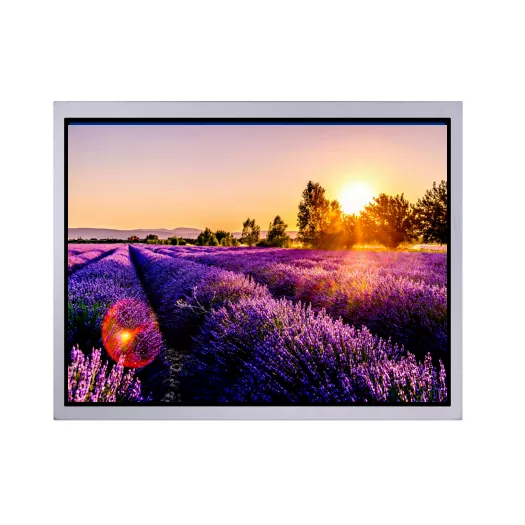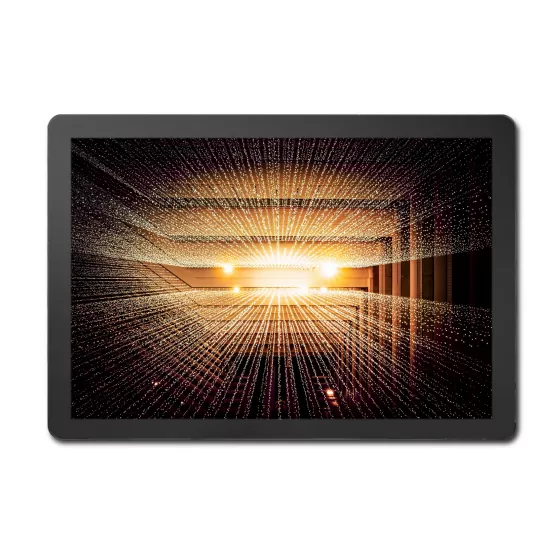
- English
- Español
- Português
- русский
- Français
- 日本語
- Deutsch
- tiếng Việt
- Italiano
- Nederlands
- ภาษาไทย
- Polski
- 한국어
- Svenska
- magyar
- Malay
- বাংলা ভাষার
- Dansk
- Suomi
- हिन्दी
- Pilipino
- Türkçe
- Gaeilge
- العربية
- Indonesia
- Norsk
- تمل
- český
- ελληνικά
- український
- Javanese
- فارسی
- தமிழ்
- తెలుగు
- नेपाली
- Burmese
- български
- ລາວ
- Latine
- Қазақша
- Euskal
- Azərbaycan
- Slovenský jazyk
- Македонски
- Lietuvos
- Eesti Keel
- Română
- Slovenski
- मराठी
- Srpski језик
What Are the Advantages of High Brightness TFT Modules with Touch Screen
2025-10-30
I’ve spent the better part of twenty years in this industry, watching display technologies evolve at a dizzying pace. In my role, I get to talk with hundreds of engineers, designers, and product managers. A question I hear more and more often is this—why should we consider a High Brightness TFT Module with an integrated touch screen for our next project. It’s not just about making the screen brighter; it’s about creating a seamless, reliable, and intuitive user interface for environments where failure is not an option. Today, I want to break down the real-world advantages of these components, moving beyond the datasheet to explain why they might be the critical component your product is missing.
Let’s talk about the core benefits that make this combination so powerful.
How Does a High Brightness TFT Module Conquer Direct Sunlight
This is the most immediate and obvious advantage. A standard display might look great in an office, but take it outside, and it becomes a dim, washed-out mirror. A High Brightness TFT Module is specifically engineered to combat this.
The magic isn't just in cranking up the backlight. It's a systems-level approach. We start with high-luminance LED backlights, but we also pair them with advanced optical bonding. This process involves filling the air gap between the LCD and the touch sensor (and often the front glass) with a clear optical resin. Let me tell you, from seeing countless field failures and successes, optical bonding is a game-changer. It does three critical things:
-
It drastically reduces surface reflections, so you're seeing the image, not a reflection of your own face.
-
It improves contrast ratio dramatically, making every color and detail pop, even in harsh lighting.
-
It makes the display assembly more robust, resistant to condensation, and less prone to physical damage.
When you combine a high-nits backlight with low-reflection surface treatments and optical bonding, you get a display that remains perfectly legible even under the midday sun. This isn't a minor improvement; it's the difference between a usable product and a returned one.
What Key Parameters Should You Scrutinize in a High Brightness TFT Module
When you’re evaluating these specialized components, looking at the full spec sheet is non-negotiable. It’s not just about brightness. Over the years, I’ve guided countless teams away from costly mistakes by focusing on the right parameters. Here is a list of the non-negotiable specs you must demand:
-
Luminance: This is your starting point. Look for modules rated from 800 nits to over 2500 nits, depending on your ambient light conditions.
-
Operating Temperature Range: Many high-brightness applications are in punishing environments. A wide temperature range, from -30°C to +80°C, is often essential for reliability.
-
Touch Solution: Is it projective capacitive (PCAP) or resistive? PCAP offers multi-touch and excellent clarity but must be tuned for operation with gloves or moisture. Resistive is a sturdy, cost-effective option for certain industrial uses.
-
Dimming Range and Method: Can the display dim smoothly to very low levels for night-time use without flickering? Analog dimming is often smoother than PWM at low levels.
-
Ingress Protection (IP) Rating: If the display is exposed to the elements, an IP65 or higher rating for dust and water resistance is critical.
To make this easier to digest, let’s look at a comparison of a standard module versus a purpose-built High Brightness TFT Module from a technical standpoint.
Table 1: Standard vs. High Brightness TFT Module Specification Comparison
| Feature | Standard Industrial TFT Module | Victronix High Brightness TFT Module with Touch |
|---|---|---|
| Typical Luminance | 300 - 500 nits | 1000 - 2500 nits (customizable) |
| Contrast Ratio | 500:1 | 1000:1 (with optical bonding) |
| Surface Treatment | Standard Anti-Glare | Advanced Anti-Reflection, Anti-Glare, & Anti-Fingerprint |
| Touch Technology | Optional Resistive or PCAP | Integrated Projected Capacitive (PCAP) with Glove/Moisture Touch |
| Operating Temperature | 0°C to +50°C | -30°C to +80°C |
| IK Rating (Impact) | Typically not rated | IK06 (protected against impact of 1 Joule) |
Why Is Integrated Touch Just as Important as High Brightness
A bright display is useless if you can’t accurately interact with it. This is where the synergy between the display and the touch interface comes into play. An integrated solution, where the High Brightness TFT Module and the touch sensor are designed and built as a single, optimized unit, offers significant advantages over a separate touch panel glued on later.
Reliability is the biggest one. A fully integrated module means there are fewer potential points of failure. The touch performance is calibrated perfectly to the display's characteristics, eliminating parallax error and ensuring pinpoint accuracy. At Victronix, we’ve seen that our customers value this reliability above almost all else. They don’t have the time or resources to deal with touch sensor drift or delamination in the field.
Furthermore, a modern PCAP touchscreen on a High Brightness TFT Module enables the intuitive, multi-touch gestures users expect from their smartphones. This drastically reduces training time and makes complex machinery easier and safer to operate.
What Are the Core Specifications of a Victronix High Brightness TFT Module
Let’s get specific. When you partner with a specialist like Victronix, you aren’t just buying a component; you’re accessing a platform of engineering expertise. Our flagship 10.1-inch model is a perfect example of what a modern, high-performance High Brightness TFT Module can achieve. The parameters below aren't just numbers on a page; they are answers to the real-world challenges my clients have brought to me for years.
Table 2: Detailed Specifications of a Victronix 10.1" High Brightness TFT Module
| Parameter | Specification |
|---|---|
| Screen Size | 10.1 inches (diagonal) |
| Resolution | 1280 x 800 (WXGA) |
| Luminance (Standard) | 1500 nits |
| Contrast Ratio | 1200:1 |
| Viewing Angle | 89/89/89/89 (Left/Right/Up/Down) |
| Touch Interface | Integrated Projected Capacitive (10-point multi-touch) |
| Backlight Life | >70,000 hours (to half-brightness) |
| Operating Voltage | 3.3V or 5.0V / 12V (system dependent) |
| Interface | LVDS, MIPI DSI |
| Special Features | Optical Bonding Standard, IP65 Front Panel, Sunlight Readability Mode, Wide-Temperature LC Filler |
High Brightness TFT Module FAQ Common Questions
Over the years, my team and I have compiled a list of the most frequent questions we receive. Here are three of the most critical ones, answered in detail.
What is the expected lifespan of a High Brightness TFT Module backlight, and how does the high power output affect it
This is a fantastic question that gets to the heart of thermal management. Running LEDs at high brightness does generate more heat, which can, in theory, reduce lifespan. However, a well-designed High Brightness TFT Module like those from Victronix is built with this in mind. We use only industrial-grade, high-efficiency LEDs and implement sophisticated thermal management in the design, such as metal chassis and heat-spreading layers. This is why we can confidently offer a backlight lifespan exceeding 70,000 hours. The key is proper thermal design at the system level, ensuring the module is mounted in a way that allows for adequate heat dissipation.
Can the touch functionality on these high-brightness displays work with wet surfaces or when the operator is wearing gloves
Yes, this is a common requirement in marine, medical, and industrial settings. Standard consumer-grade PCAP touchscreens often fail in these conditions. Our integrated touch controllers are specifically tuned to handle these scenarios. They can be configured to report touches even with thick industrial gloves or to ignore the false touches caused by water droplets on the screen. This is not a standard feature on all displays, so it is absolutely a question you must ask your supplier.
Are these modules a simple drop-in replacement for a standard TFT display in an existing design
Unfortunately, it is rarely that simple. A High Brightness TFT Module typically requires a higher driving voltage and current for the backlight, generates more heat, and may have different physical dimensions and connector locations. While the video signal (LVDS, etc.) is often compatible, the power and mechanical aspects usually require a board re-spin or a new chassis design. We always advise our clients at Victronix to involve us during the prototyping phase. We can provide detailed mechanical drawings, thermal models, and interface documents to ensure a smooth and successful integration into your product, avoiding costly last-minute design changes.
I hope this deep dive has shed light on the substantial advantages and important considerations of integrating a high-performance High Brightness TFT Module into your design. It’s a decision that elevates your product from being merely functional to being truly exceptional in challenging environments. This isn’t just about specs; it’s about delivering a flawless user experience that builds trust in your brand.
The journey from concept to a fully realized product is filled with critical decisions. Don't let your display be the weak link. Contact us at Victronix today. Let's start a conversation about your specific application, environmental challenges, and performance needs. Our engineering team is ready to provide you with comprehensive datasheets, custom sample kits, and the expert technical support you need to make your next project a resounding success.






